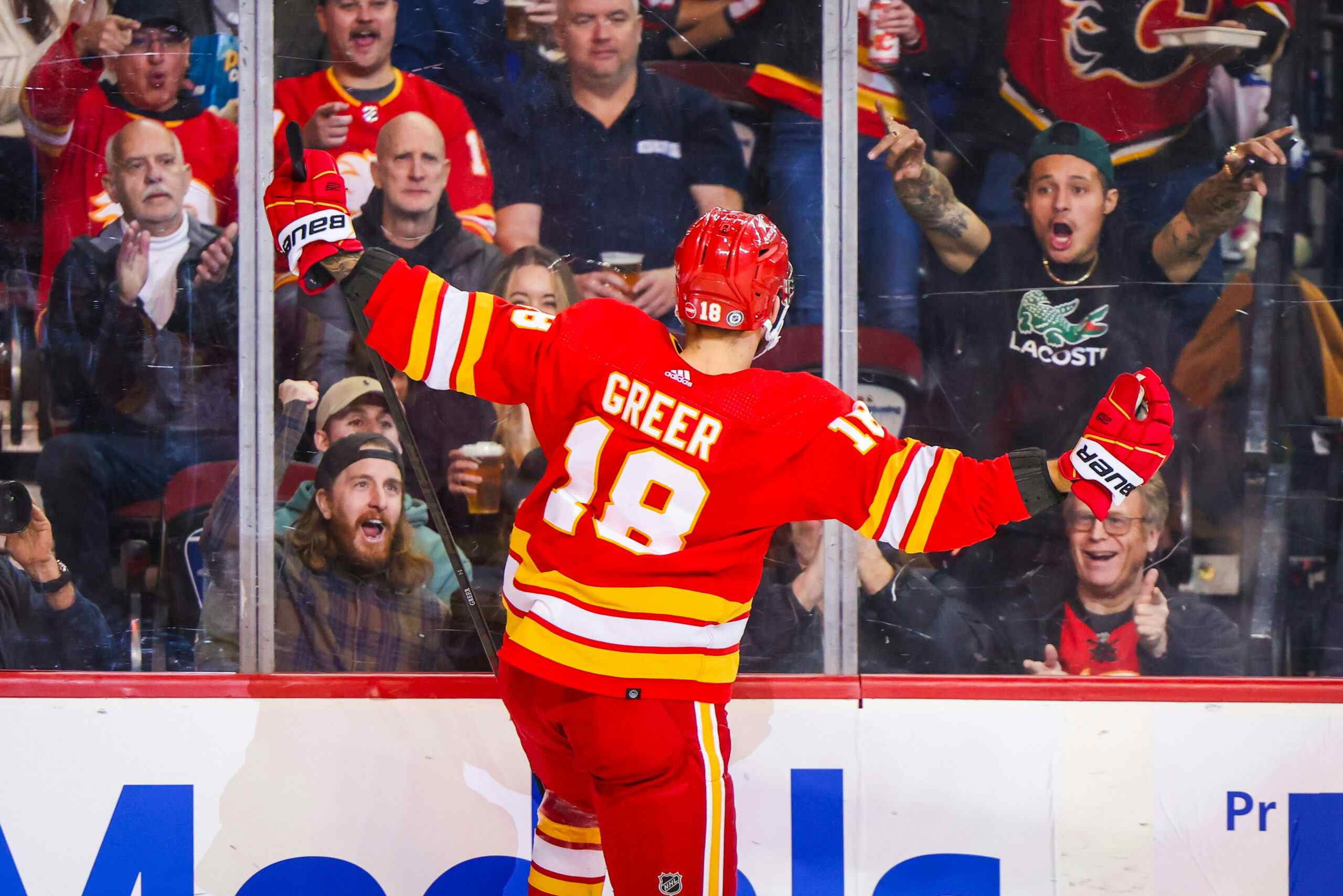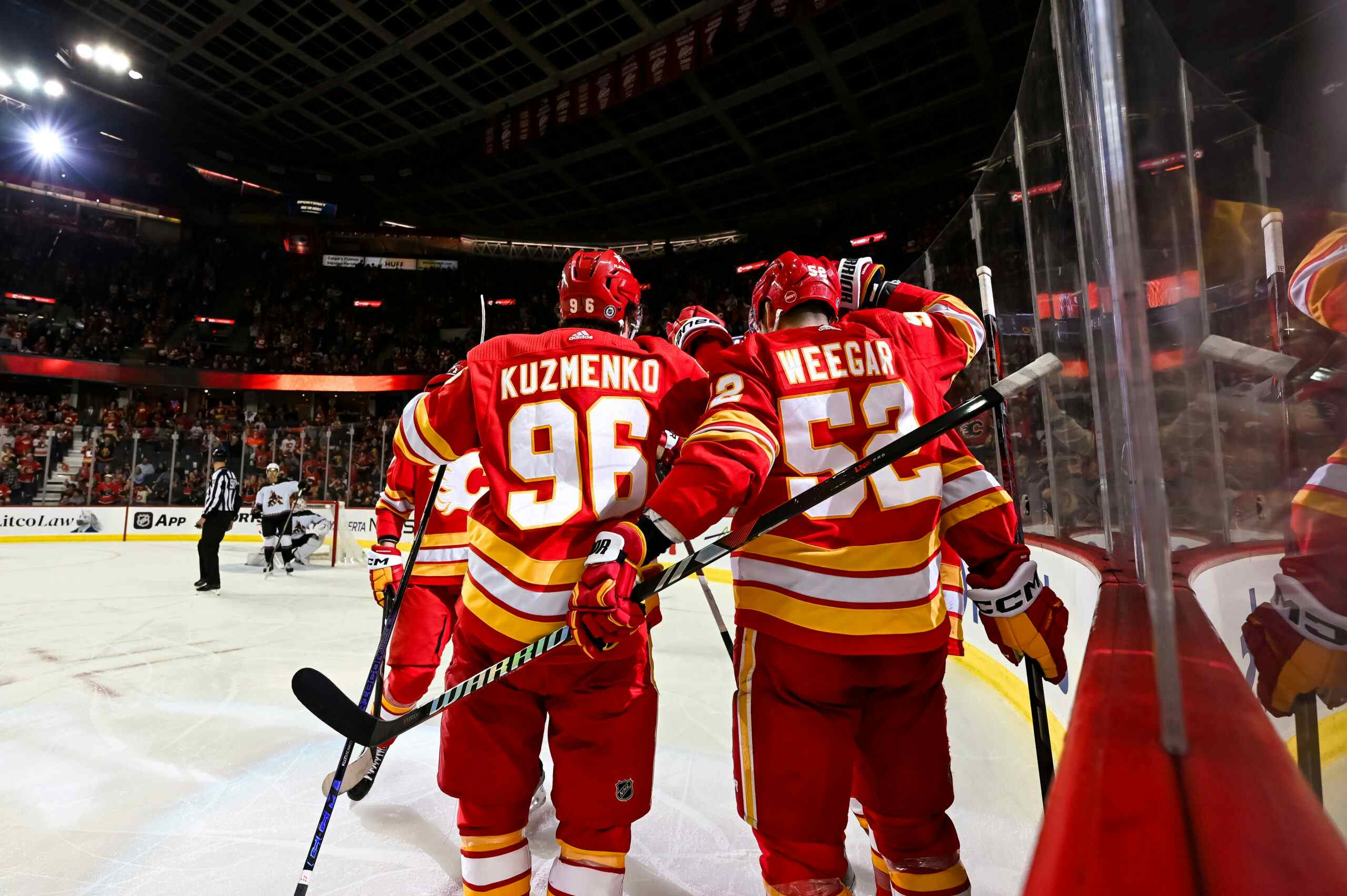Five things: Ahhhhh jeez
By Ryan Lambert
11 years ago
1. What are they doing?
So Roger Millions tweeted on Monday that the Flames have every intention of scaling back payroll so that they’re no longer a cap-ceiling team.
Theoretically, this is not a thing I hate. Any team that hasn’t made the playoffs in three seasons despite being at the cap ceiling is clearly doing something very, very wrong and consequently, something has to change. Therefore, scaling back payroll is a good idea in theory.
But a lot of things that are good ideas in theory (like socialism) tend to go extremely poorly in actual practice, and what we can glean from that is just the idea of saying that the team will sit the next season at least more or less at $15-17 million below the cap ceiling — assuming the new CBA keeps the current salary cap structure approximately intact — may not accomplish the team’s previously-stated goals.
2. The first reason this is really stupid

They want to be competitive.
That was one of the things Bob Hartley repeatedly stressed in both his interview on the Flames’ official website and his introductory press conference. That, itself, was not exactly jibing with the youth movement philosophy John Weisbrod in particular had been disseminating through official channels just a few months prior, but if you want to lure successful coaches, maybe you have to be a little pliable in that regard. Fair enough.
But let’s keep several things in mind here. First, the Flames have 16 or 17 contracts all signed and ready to go for next season (depending on whether you think Sven Baertschi sticks with the big club, and I do), for a cap hit of $50.3 million or $51.6 million, respectively. That’s with six or so restricted free agents to re-sign, though, granted, not all will be with the big club next season. Those RFAs include Leland Irving and Mikael Backlund, who one supposes the team would be loath to deal. That also doesn’t include top KHL netminder Karri Ramo, who may or may not come over to play for Calgary.
And so how do you actively improve a roster that missed the playoffs by five points while spending the bare minimum to fill three or four holes in the roster (an average contract of a little less than $1 million apiece)?
Well, there’s one answer, but the team itself has expressed a distate for it…
3. The second reason
They refuse to sell any of the team’s top players, probably because of the above reason, which again, is stupid.
If you read the Millions tweet quoted above, you’ll note that he used a hashtag asking "who comes, who goes?" An interesting question.
We’ve already been told that Jarome Iginla will, under no circumstances, be sold off for a raft of picks and prospects. Repeatedly, in fact. And then Millions confirmed to our own Kent Wilson today, in discussing the decision to scale back payroll significantly, that Miikka Kiprusoff is likewise not up for offer to any goaltender-hungry teams out there, this despite it clearly being the sellers’ market-est of sellers’ markets in the last several years. Millions also noted late last week that the team currently has no plans to buy anyone out, at least not in the current window to do so (though this would of course not preclude doing so during any buyout amnesty window when the new CBA gets signed).
Which, Millions later hinted, means that Jay Bouwmeester is moved, perhaps at the draft. It’s only logical as he has one of the few remaining big-money contracts ($6.68 million against the cap the next two seasons), and, unlike Mike Cammalleri or Roman Cervenka (both of whom are being paid too much), was not just acquired by this same management group a few months ago.
The problem with moving Bouwmeester is that it leaves a big old hole in the top defensive pairing, first and foremost, and second, comes the distinct problem that, unlike any kind of front-loaded deal, pays him more or less the same amount of money as his cap hit. This should be discouraging to all but cap floor teams, who are usually more than happy to take other sides’ salary dumps as long as they don’t have to give much back in return. They’d be less likely to do so given how much they would actually have to pay him $6.6 million in actual dollars, versus his $6.68 million cap hit. And again, that’s for each of the next two years, not just this one.
The only other option, which seems even less feasible, is moving Matt Stajan, but no one wants him for obvious reasons.
4. Reason No. 3
The above two reasons are dichotimous with the idea of cutting payroll.
I’m all for the idea of spending wisely. I like the idea of having cap flexibility and I like the idea of not paying a ton of money for sub-mediocre teams. If you’re going to compete, you have to — just more wisely than you have in the past — and this, perhaps, necessitates not trying to land a big fish and either having it work out or not, at least for a little while. Olli Jokinen, we’ve repeatedly been told, will not be back with the team, and okay sure. Nor, one supposes, will Cory Sarich or Scott Hannan, who combined made $4.6 million against the cap last season.
But it comes with the tacit implication that the team recognizes it has spent money poorly, and therefore needs to remediate those problems. One great way to do that is to move out sizable contracts. That’s contractS. Plural.
By both standing pat as a team trying to compete, and avoiding having to press the big red button marked "REBUILD" at all costs, the team is effectively treading water in much the same way it has the last three years, but just doing so at a lower price point. If a team like this couldn’t make the playoffs before, it’s difficult to imagine a scenario in which a less burdensome price tag helps it to do so in the near term.
5. I’m crying

As far as I’m concerned, this just reinforces my belief that the team is essentially rudderless, or worse, it’s being piloted by two separate captains with very different ideas of how to stay afloat.
I am fairly convinced that Jay Feaster and Co. would like to move more youngsters into top roles with the team and are the guys behind salary being scaled back. That’s just the feeling you get when you hear them talk, "Going For It" declarations (Never Forget) and guarantees of playoff appearances aside. Those, I feel, are coming from top executives like Ken King and Murray Edwards, who clearly want to milk this cash cow for everything it’s worth while they still can. They got a taste of big-time money in 2004 and have been able to rely upon the two most marketable players on that same team since.
Consequently, this is very much an organization trying to live on both sides of the issue. It doesn’t want to trade Iginla or Kiprusoff when they still have some amount of value — though they’d know better than me whether Iginla wants to come back at the end of his current contract at a steep discount if only for the victory lap — because that would give the appearance of a rebuild, which if pursued, would likely lead to fewer jerseys and tickets sold over the next five years or so, without providing the guarantee that it will actually work and the team will be better at the end of the day for all the years of tanking (see: Oilers, Edmonton).
In the near term, for an organization with an hilarious stated goal of attempting to make the playoffs, I don’t know who this helps apart from the guys cutting the checks. It sure isn’t the team.
Recent articles from Ryan Lambert





